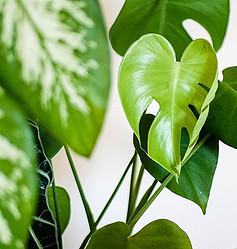We often hear news stories about big businesses polluting the environment – especially the air we breathe. Air quality is a very serious issue, especially that caused by industrial pollution. Did you ever stop to think, though, that the air in your home may also be polluted?
Most everyone spends at least eight hours a day at work, but think about how many hours you actually spend in your home. It may not seem like a lot, especially if you are always on the go, but most people are actually in their homes a minimum of ten hours a day.
Chemical hazards in the home
Many chemicals are used in the materials used to build our homes – insulation, treated wood, sealants, paint, the list could go on and on. You may also have chemicals in your flooring, your carpet, and your furniture. Older buildings may also be full of mold, old dust in the vents, and bacteria.
These things can all cause many physical symptoms and discomforts, especially for the elderly or those who may have compromised immune systems. Other issues can include asthma type symptoms, allergic reactions, headaches or skin issues, even in otherwise healthy people when the air quality is poor.
What can you do?
There are many other things that can affect the air quality in your home, so it’s important to try to eliminate what you can and do what you can with the rest. Here are a few simple and inexpensive solutions to help improve the air quality in your home.
Invest in a quality vacuum 
Did you ever look inside a full vacuum cleaner bag? Disgusting – to say the least! Just think for a minute, if that is what is in the bag, how long have I been breathing it, and how much is left?
A good vacuum used regularly can make a big difference in your air quality and the amount of dust in your home. Less dust means less dust mites, and for many people less dust mites mean less allergy symptoms. While a vacuum is not an inexpensive solution in itself, the money you save by being healthier is well worth the investment.
Use your vacuum to clean more than just your carpet. Get one that has the ability to vacuum hardwood and tile floors, Make sure there are attachments that can help you dust the furniture and blinds, and also vacuum the furniture and drapes. Some vacuums are equipped with filters which help the dust from recirculating into the air.
Groom your pets
When pets are regularly groomed, they will shed less, and bring less dander into your home. When they go outdoors, wipe off their feet before you allow them into the main part of your home.
Get rid of the candles
Most candles have lots of chemicals making up what seems like a beautiful scent. They may smell good to you but besides the damaging chemicals, they also release soot which can leave residue on the walls, furniture, and in your lungs.
Sometimes we want the house to smell nice, so I recommend getting some certified pure tested essential oils and use them in a diffuser. Many of the essential oils not only smell nice, but can support your health as well.
If you must use candles, use beeswax. Candles made of natural beeswax can actually purify the air by creating negative ions in the home which neutralize contaminants. Just be sure they are free of any chemical scents.
Get rid of the mold
Look for areas that may be damp and find a way to get them better ventilated. Inspect gutters and roofing regularly and keep them clean and maintained so the water stays outside. Be sure there are no leaks anywhere that may be causing dampness to build up in the walls or corners of cabinets. Take time to regularly check plumbing to be sure no small leaks are forming.
Add some houseplants 
There are many plants that can help keep your air clean. According to an article written by Ellen Riley for Healthline, “In 1989, NASA discovered that houseplants can absorb harmful toxins from the air, especially in enclosed spaces with little air flow. This study has been the basis for newer studies about indoor plants and their air cleaning abilities. While plants have less horse power than air purifiers, they’re more natural, cost effective, and therapeutic.”
You can find plants that are very easy to grow at your local nursery. A few of my favorites (and I was born without a green thumb) Spider Plants, Dracaenas, Golden Pothos, and Areca Palms. They are hearty and add a freshness and peace to any space.
Get a salt lamp
According to WebMD, sellers of these decorative pieces say they do more than light up a room. They claim the lamps can boost mood, improve sleep, ease allergies, help people with asthma breathe better, and clean the air, among other benefits.
Those who sell Himalayan salt lamps claim they produce negatively charged ions while water molecules from the air attract to, and then evaporate from, the warmth of its surface. Those who believe in the health benefits of these lamps give negative ions much of the credit.
While there are no recognized studies that support these claims, those that use the lamps swear by them. I recommend that if you are interested, give it a try and then decide for yourself.
I hope these tips have given you some ideas on how to improve the air quality in your home. Better air, better breathing, and as I always say when you need a little more peace, “take a deep breath.”
Find your purpose – find your joy!

